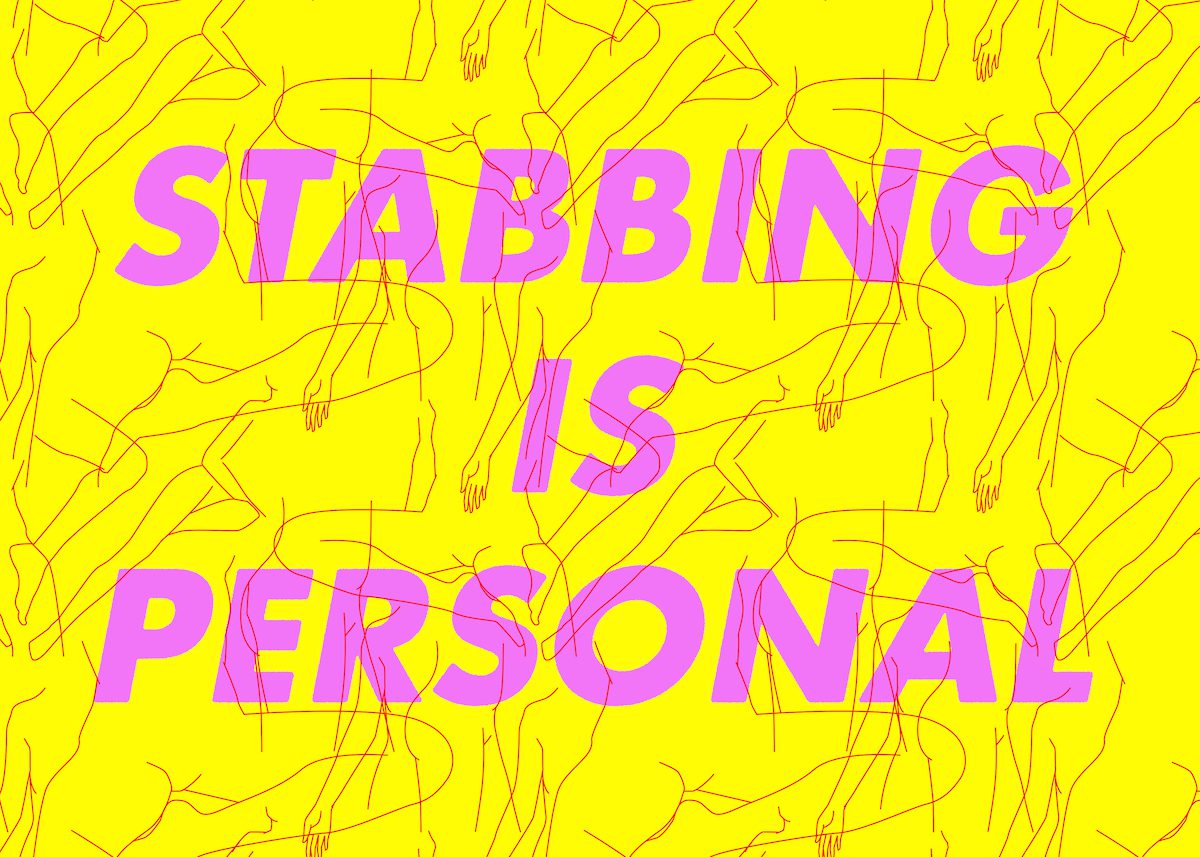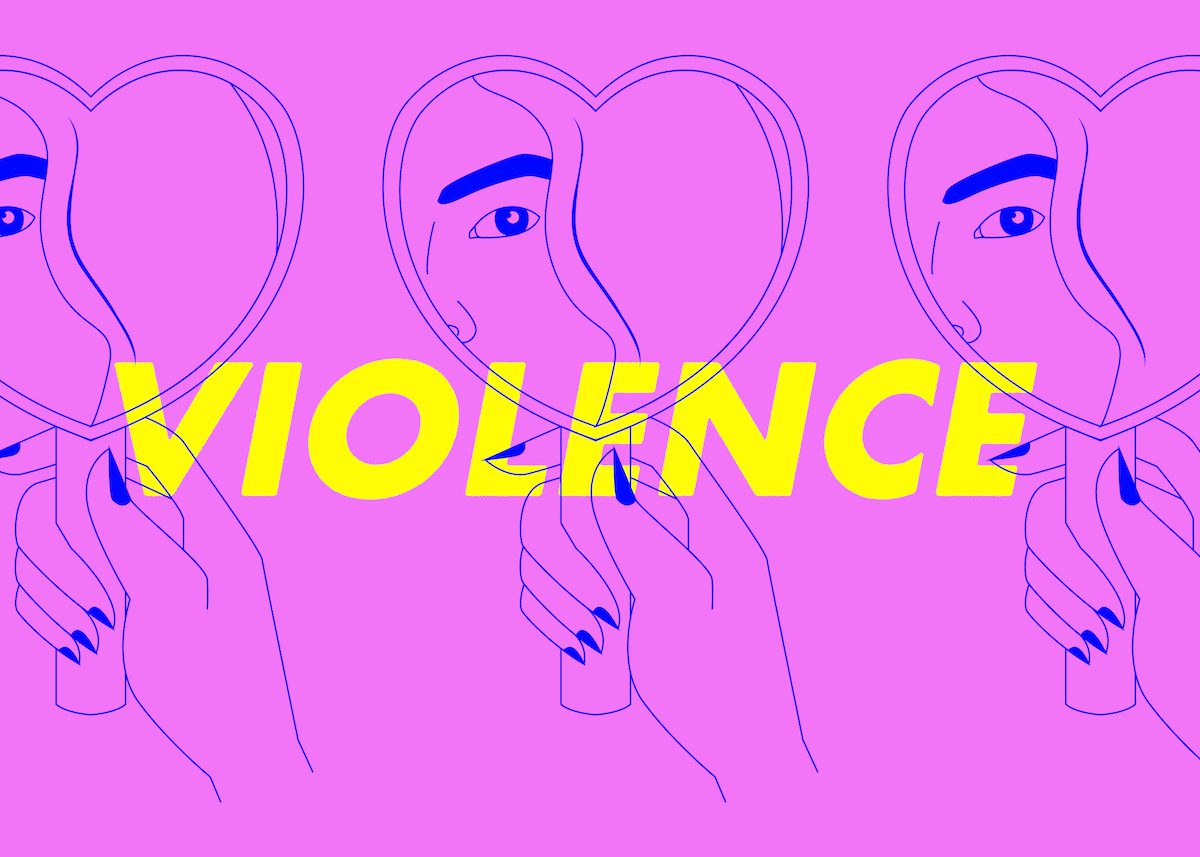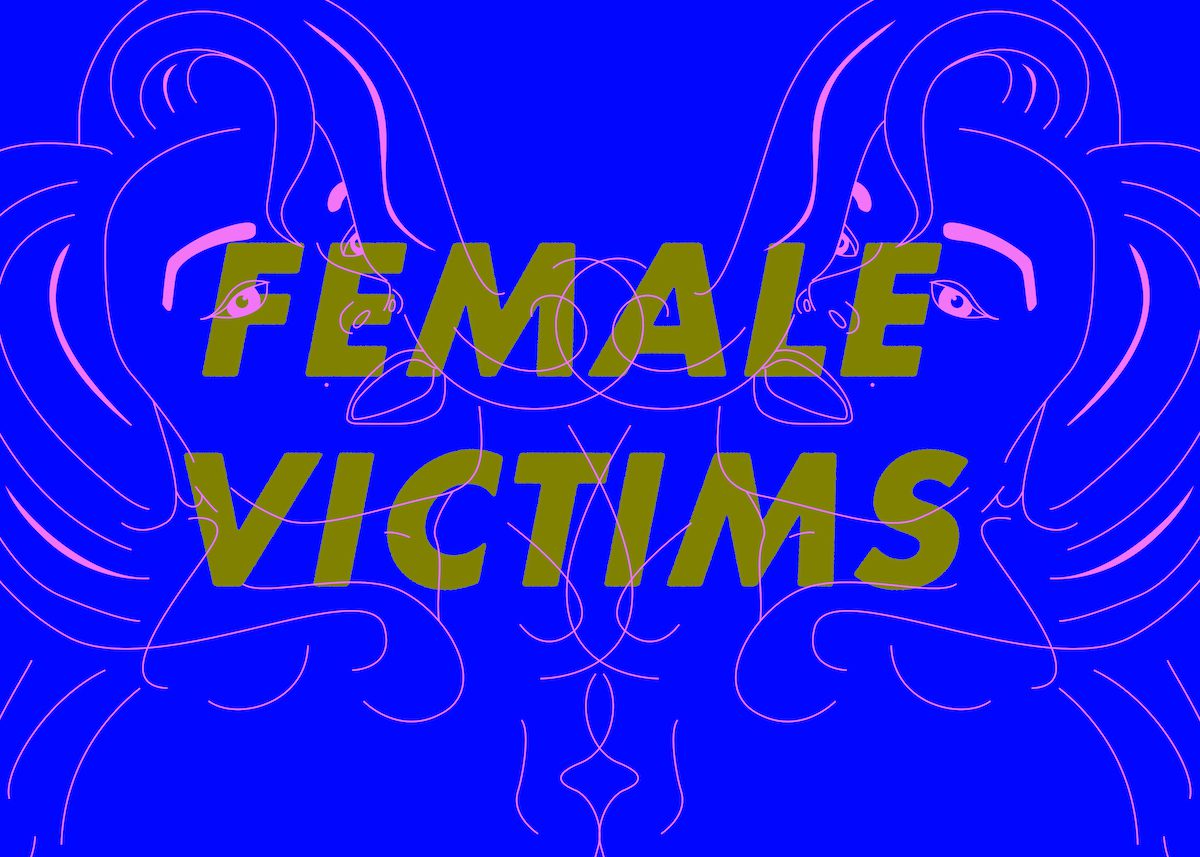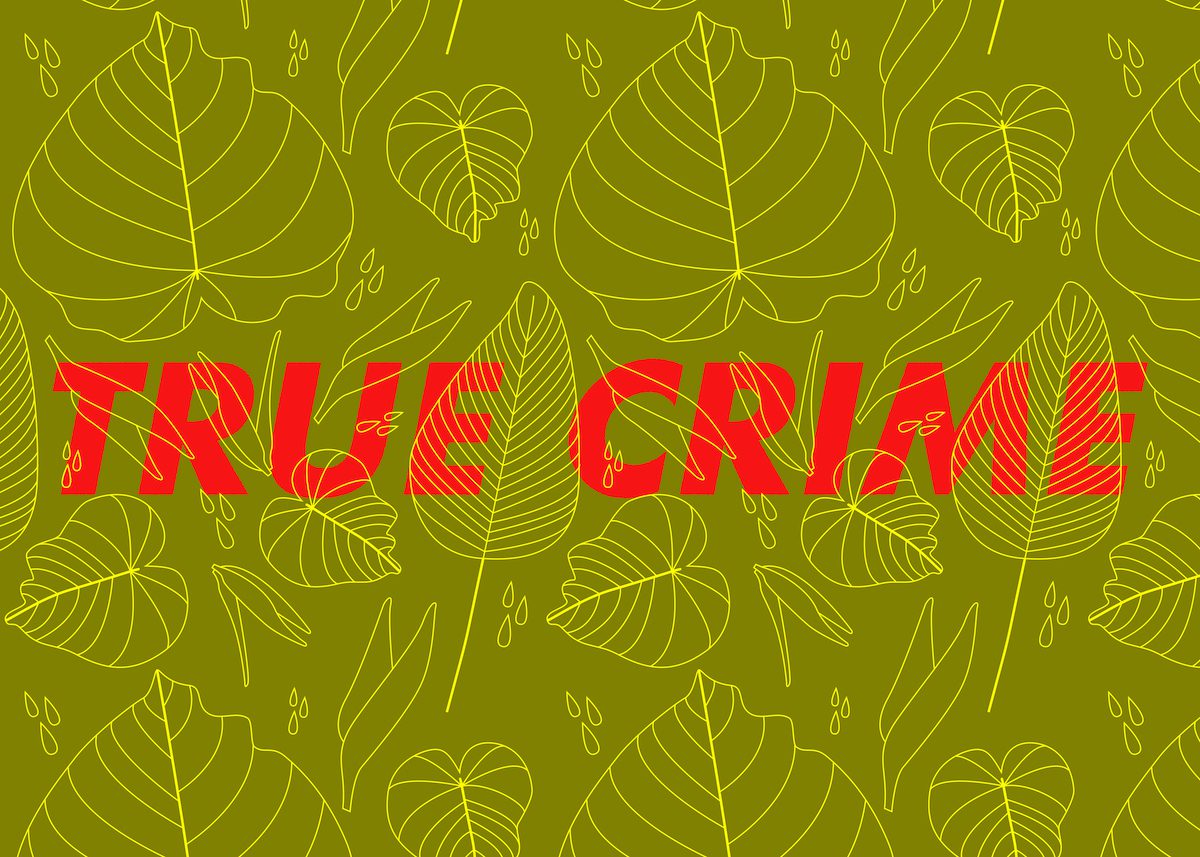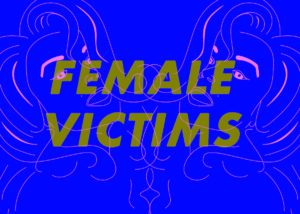
At thirty-five, I was suddenly thrust into the unfamiliar role of patient: I was diagnosed with thyroid cancer, and underwent two surgeries to have the gland removed. A little over a year later, doctors found blood clots in both of my lungs, and a filter inserted through my groin to catch additional clots broke upon retrieval, leaving a small piece of metal permanently embedded in the main vein leading to my heart.
Soon after the blood clot filter broke, I became powerfully drawn to true crime TV programs, the very kind of lurid stories I had always avoided. Before this point, even Law & Order had sometimes been too violent for me; I was particularly disturbed by storylines that featured female victims of bloody crimes. I didn’t understand why actresses agreed to play sheet-covered corpses on autopsy tables. I didn’t know why any female viewer would want to contemplate other women’s destruction, even if it was fictional. Crime dramas were too real for me.
After my invasive medical procedures, with no small amount of horror, I found myself fascinated by real-life cases of women who were murdered by men: husbands seeking life-insurance payouts, jealous ex-boyfriends, stalkers who fixated on them after a brief encounter and tracked them like prey. True crime had become wildly popular by this time, and there was no shortage of programs to fulfill public demand.
Some shows, like the Investigation Discovery network’s Obsession: Dark Desires, resemble crime dramas in that they use actors to recreate violent crimes, stopping short of portraying sexual assault. Others, like Forensic Files, focus on the detective work and the physical evidence that bring killers to justice.
I was especially interested in knife attacks; I listened to narrators describing the number of stab wounds, their exact placement on the body. Stabbing is personal, detectives repeated in interviews, and I immediately, intuitively understood what they meant: the intimacy of the blade entering flesh, the nearness of the man’s body bending over his victim’s. I paid rapt attention whenever a medical examiner stated a woman’s throat had been slit.
This new interest shamed and bewildered me. I had never personally experienced this kind of violence. I was a feminist, and as a women’s studies minor in college, I had learned to critique the way women are portrayed in media. I could plainly see that true crime TV programs exploited the suffering of female victims for ratings, detailing all the degradation they endured.
They cashed in on these women’s attractiveness, emphasizing their beauty whether they were considered model-gorgeous or pleasant-looking or anything in between. As in crime dramas, recreations of crime scenes showed pretty actresses playing dead, limbs gracefully askew in a pool of fake blood, eyes closed as if peacefully asleep. Their utter passivity made them lovelier in the eyes of a culture that equates femininity with stillness and silence. Some shows used actual crime scene photos that displayed the victims’ gashes and ligature marks, though they pixelated the faces; but even these programs depended heavily on portraits of these women in life, their faces glowing in family snapshots and wedding portraits.
I was aware of all of this, and yet my fascination with female victims and male perpetrators increased, becoming an outright obsession. I watched true crime TV hour after hour, alone in the dark, too ashamed to tell anyone. My viewing habits seemed so crazy that I didn’t even want to disclose them to my therapist.
I knew that this dramatic shift from avoiding violent content to seeking it out had something to do with my medical experiences—the timing couldn’t be a coincidence. But I was unable to puzzle out the connection between medical procedures and true crime TV. I didn’t know why those procedures had left me feeling furious and physically vulnerable. My doctors had saved my life, twice, and yet I feared and resented them. They were all men, but so what? Their conduct and their intentions were wholly honorable. They were there to help me.
Still, when I met the friendly surgeon who would remove my thyroid, my heartrate spiked as he drew his gloved finger across the base of my throat, to indicate where he would cut me. When I first saw the incision, bright pink and puckered, my first thought was that it looked as if I’d been attacked. After the thyroid surgeries, I felt that something more than the gland had been taken from me—somehow, my sense of safety in the world seemed to have been removed as well, and I had the scar to prove it.
I watched program after program in which women were killed, switching the channel if I happened across cases where men were the victims of violence. I didn’t yet know that men are far more likely than women to become victims of homicide. True crime TV gave the impression that women are more likely to be murdered. These programs tended to focus on young, white, middle-class victims, greatly skewing the overall statistics on murders in this country.
Stories of beautiful women who come to tragic ends are inherently dramatic, but I wasn’t looking to literature or films to assuage my bizarre hunger. I had to admit that the drama of true crime TV had its appeal—that here, death was presented as entertainment—but that wasn’t what drove me to binge-watch now. Strangely, it was as if I already had something in common with the dead and the left-for-dead. I stared at the actresses pretending to be corpses and the pixelated faces of the actually deceased, and wondered what on earth they had to do with me.
In time, it came to me: I sought out female victims of violence because on an unconscious level, I had indeed experienced medical procedures as attacks.
My body couldn’t distinguish between a knife-wielding criminal and a surgeon with a scalpel. My throat and groin had literally been cut, and my doctors’ good intentions were irrelevant to my body.
I identified with women who had been harmed by men, even though I was consciously aware that my male doctors had only my well-being in mind. These men had the power to save my life, and that power wasn’t so different from the murderer’s power to take life. The procedures had invaded my throat and my groin, vital and vulnerable areas of the body. A doctor’s insertion of a scalpel into one of these areas was an intimate act—he had to come in close, and penetrate my flesh. It was personal, as the detectives on my favorite shows always said.
The visuals in my memory and those on true crime shows matched: A doctor stands over my groin to make an incision as I lie sedated. A murderer with a knife stands over a woman who lies stilled by fear or loss of consciousness. To process what my body had endured, I had to see this scenario replayed over and over. The doctor and the murderer have opposite intentions, but the same ability to spare or take life.
When I began to research the genre, I was relieved to learn that women form the predominant audience for true crime TV as well as books and podcasts. I believe there are many reasons why true crime appeals to women: we love mysteries because the ability to uncover secrets is a source of power; we’re fascinated with trouble in the domestic realm, where many murders occur. But I was struck most when I read of other women who, like me, turn to true crime and fictional crime stories as a way to process their trauma. They, too, are looking for female victims. They have survived violent crimes at the hands of men, and stories of domestic violence, stalking, and sexual assault validate their experience. I believe there must be other women who watch because they’re processing medical trauma, too. Every woman has in some way felt physically threatened by a man. In the #MeToo era, we want to see the realities we live with every day reflected on page and screen.
My epiphany about medicine and violence didn’t end my interest in the female victims of true crime TV. I still watch these stories now, though not for many hours at a time. I’m still exploring what has happened to my body. I remain deeply conflicted about the fact that I’m using other women’s brutal deaths to understand my own experience. But I’m also fascinated by the stories of survivors of violence, immensely impressed by their strength and courage. I tear up listening to families of victims, knowing they would prefer that the hour be devoted to their loved one’s life rather than her death. True crime TV isn’t the solution to healing trauma—my own isn’t resolved, and may never be. These shows are something I hope we can examine as a culture, something I hope we can replace with real conversations about what women endure.
***
Rumpus original art by Rosie Struve.
***
Excerpted from Mercy: A Memoir of Medical Trauma and True Crime Obsession by Marcia Trahan. Copyright © 2020 by Marcia Trahan. Reprinted by permission, courtesy of Barrelhouse Books.

